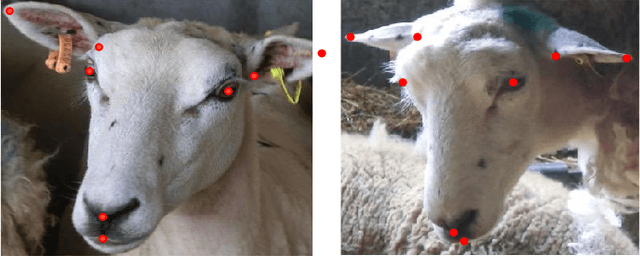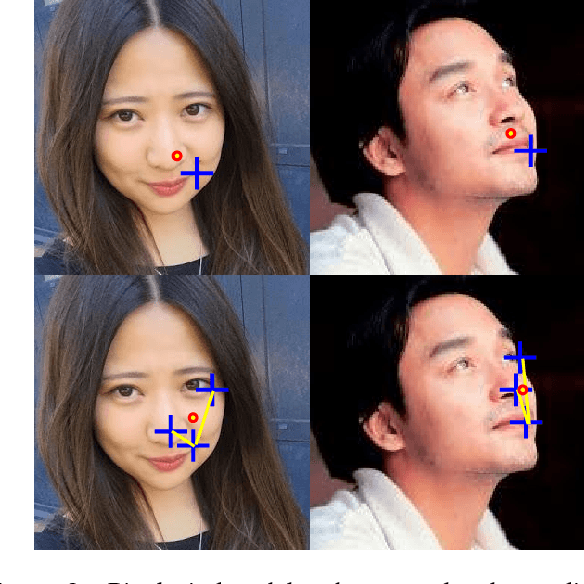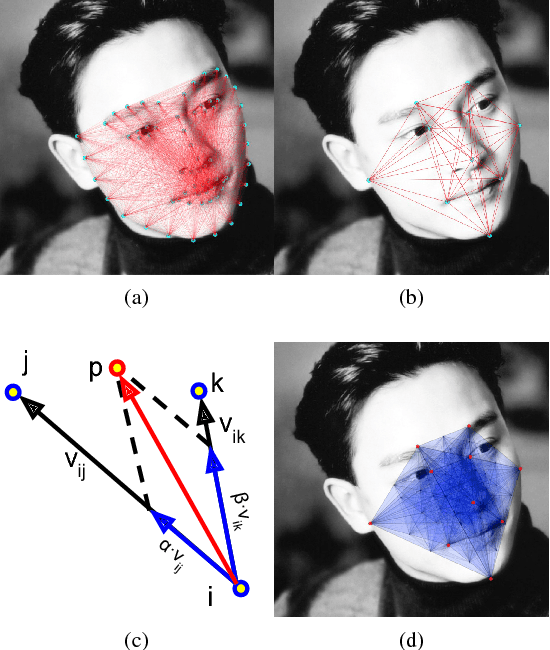Human and Sheep Facial Landmarks Localisation by Triplet Interpolated Features
Paper and Code
Sep 16, 2015



In this paper we present a method for localisation of facial landmarks on human and sheep. We introduce a new feature extraction scheme called triplet-interpolated feature used at each iteration of the cascaded shape regression framework. It is able to extract features from similar semantic location given an estimated shape, even when head pose variations are large and the facial landmarks are very sparsely distributed. Furthermore, we study the impact of training data imbalance on model performance and propose a training sample augmentation scheme that produces more initialisations for training samples from the minority. More specifically, the augmentation number for a training sample is made to be negatively correlated to the value of the fitted probability density function at the sample's position. We evaluate the proposed scheme on both human and sheep facial landmarks localisation. On the benchmark 300w human face dataset, we demonstrate the benefits of our proposed methods and show very competitive performance when comparing to other methods. On a newly created sheep face dataset, we get very good performance despite the fact that we only have a limited number of training samples and a set of sparse landmarks are annotated.
 Add to Chrome
Add to Chrome Add to Firefox
Add to Firefox Add to Edge
Add to Edge